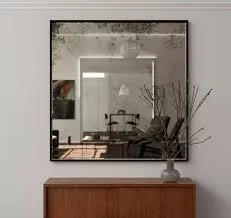

Understanding Low-E Glass A Game Changer in Energy Efficiency
In recent years, the demand for energy-efficient building materials has surged, driven by growing environmental concerns and the need to reduce energy consumption. Among the most revolutionary products in this realm is Low-E glass, which stands for Low Emissivity glass. This innovative material offers a wide range of benefits, making it a popular choice for both residential and commercial construction projects.
What is Low-E Glass?
Low-E glass is a type of insulated glass that has a special coating designed to minimize the amount of infrared and ultraviolet light that passes through it without significantly affecting the amount of visible light transmitted. The coating is usually made of metallic oxides and is applied to one or more of the inner surfaces of the glass panes within an insulated glass unit. This unique feature allows Low-E glass to reflect heat back towards its source, providing better insulation and energy efficiency.
How Does Low-E Glass Work?
The low emissivity coating works by reflecting heat while allowing natural light to enter. During colder months, the glass reflects interior heat back into the building, reducing the need for additional heating. In warmer months, it reflects solar heat away, keeping indoor spaces cooler and minimizing reliance on air conditioning. This dual benefit effectively helps in maintaining a stable indoor temperature throughout the year, leading to significant energy savings.
Energy Efficiency and Cost Savings
One of the primary advantages of Low-E glass is its contribution to energy efficiency. Buildings equipped with Low-E glass can experience a considerable reduction in energy costs, as they require less heating and cooling. According to the U.S. Department of Energy, homes using Low-E glass can save between 10% and 15% on energy bills compared to traditional single-pane glass. For commercial buildings, which consume a substantial amount of energy for climate control, the savings can be even more pronounced.

Environmental Impact
Adopting Low-E glass not only benefits building owners financially but also contributes positively to the environment. By reducing energy consumption, buildings with Low-E glass have a lower carbon footprint, which is crucial in combating climate change. Furthermore, as less energy is required to maintain comfortable indoor temperatures, fewer fossil fuels are burned, reducing greenhouse gas emissions.
Additional Benefits
Beyond energy efficiency, Low-E glass offers other advantages. For instance, it helps to filter out harmful UV rays, protecting furniture, flooring, and artworks from fading. This feature is particularly beneficial in homes with large windows or glass doors that let in a lot of sunlight. Additionally, the enhanced insulation properties of Low-E glass can help reduce noise pollution, making indoor environments quieter and more pleasant.
Cost Considerations
While Low-E glass may be more expensive upfront than conventional glass, the long-term savings and benefits often outweigh the initial investment. Many homeowners and builders find that the energy savings achieved after installation provide a quick return on investment. Additionally, several government incentives and rebates may be available to encourage the use of energy-efficient materials like Low-E glass.
Conclusion
In conclusion, Low-E glass represents a significant advancement in building materials, offering numerous benefits for energy efficiency, cost savings, and environmental protection. As awareness of energy conservation continues to grow, the adoption of Low-E glass is likely to increase, further transforming the landscape of modern architecture. Whether you are a homeowner looking to enhance your property or a builder aiming to meet the demands of environmentally conscious clients, integrating Low-E glass into your projects can be a wise and impactful choice. Ultimately, the shift towards energy-efficient building materials like Low-E glass is not just a trend, but a necessary step towards sustainable living and responsible resource management.